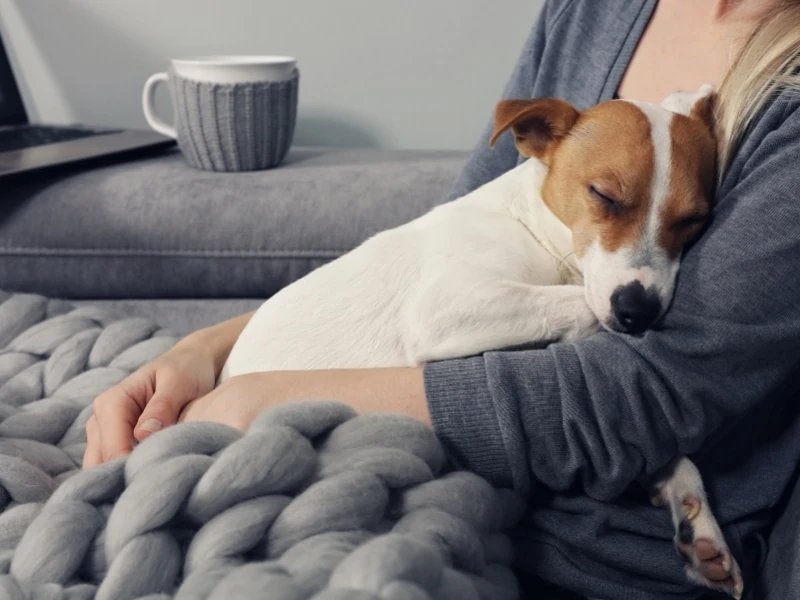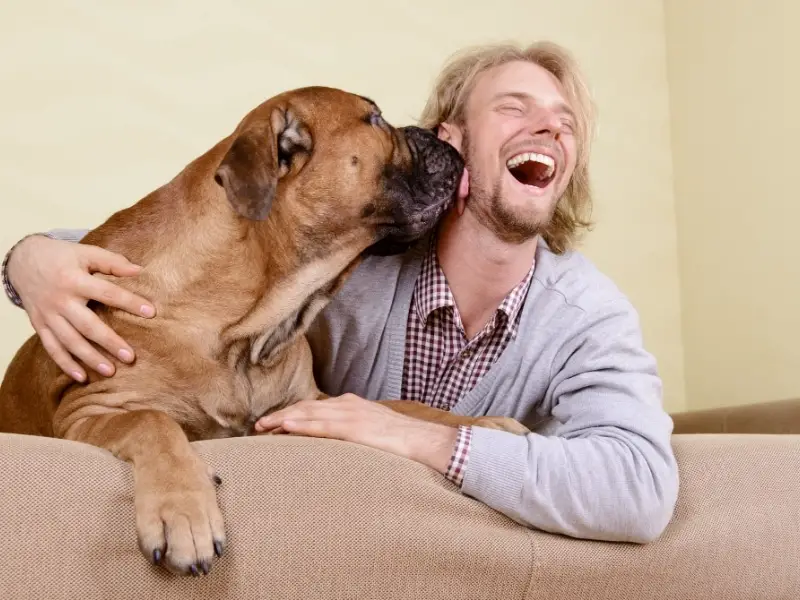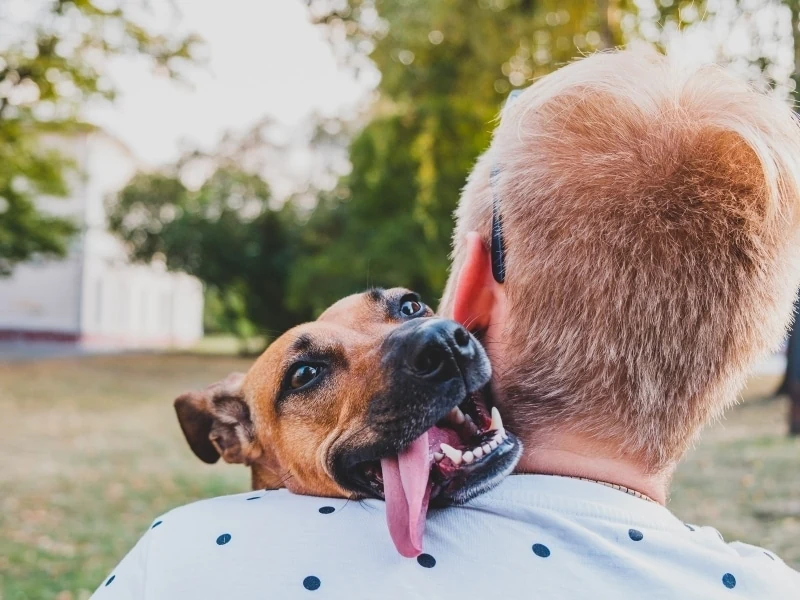A dog’s primary communication source is body language, but it is not always easy to interpret. Whether the movement is subtle or overt, such as putting their head on you, it is up to you to decode. So, what does it mean when a dog puts its head on you?
When your dog puts their head on you, leans into you, or rubs up against you, it might be nothing more than to attract your attention. Your dog may be telling you they love you or asking you to show your love for them. Other reasons include stress, fear, or a need to protect you from a perceived threat.
This article will explore the various reasons your dog is putting their head on you. Continue reading if you wish to gain valuable insight into this behavior and why you must understand your dog.
Why Do Dogs Put Their Heads on Humans?
According to Karen Reese, the animal behavior manager at Operation Kindness, your dog seeks your attention and affection because, like humans, they are comforted by touch (source).
Most of the time, dogs love attention, but they also want their owners to know how much they care about them. Dogs form powerful bonds with one or more household members in a short amount of time.
A dog’s loyalty and love are eternal and given freely, and they deserve the same from you. A dog that is loved and nurtured as a puppy thrives. They tend to have fewer issues with anxiety and love to socialize.
Dogs are highly intelligent beings that have the cognition and intelligence of a human aged two to five years, according to Dr. Jill Sackman in an article published in PetMD (source).
Not only are dogs intelligent, but it is also important to note that dogs have feelings. Dogs express fear, anxiety, love, optimism, depression, happiness, and even jealousy.
According to Dr. JP McCue, a board-certified veterinary neurologist at NYC’s Animal Medical Center, dogs process pain and feelings on an emotional level just like humans. Given an MRI, the canine brain area that lit up when exposed to a crying baby was the same as in the human brain.
Dogs cannot express themselves verbally using words, but their use of body language more than compensates for it. However, knowing what your dog is trying to tell you is never easy. For instance, a tail wag has multiple meanings depending on the circumstances, and the same goes for why they place their head on you.
What Your Dog Is Telling You

Dogs lean on their owner to show their affection, to get attention, or when they are stressed or afraid.
Attention
Your dog may be leaning on you to tell you they want you to pet or play with them, but they are also letting you know they love you.
Fear and Anxiety
Dogs are individuals and will react differently than other dogs in any given situation. However, a few everyday stressors may result in your dog looking to you for reassurance, support, or protection (source).
- Thunderstorms
- Cars backfiring
- Gunshots
- Fireworks
- Strangers
- An aggressive dog
What Does It Tell Other Dogs?
Dogs are territorial by nature. They do not want another dog to touch their toys, food, or human. Your dog may not just be leaning against you or sitting on your feet and leaning to get your attention or show affection.
According to Jennifer Brent of Found Animals, your dog is putting their scent on you to warn other dogs to stay away. You are theirs (source). They protect and claim you all in one gesture.
What about Hugs?
Hugging is human behavior, and many dogs do not enjoy being embraced. Professor Stanley Coren, Ph.D., DSc, FRSC, an expert in dog psychology, conducted a small study. He took 250 images of people hugging dogs and analyzed each dog’s body language.
He concluded that 81% of the dogs showed signs of stress or anxiety, 11% did not seem to care, and 8% were relaxed and happy (source).
Some signs your dog is anxious or stressed include turning their head away and avoiding eye contact. The whites of their eyes will show, and their ears may be back or flat; they may lick their lips, yawn, or hold their body stiff.
Dogs do not hug each other, and, to them, the gesture can be threatening. When one dog puts their paws over another dog, they are exerting dominance (source).
Unsolicited Attention
Contrary to what many people believe, showing their belly is how dogs most often show fear and insecurity — it is submissive behavior. It’s true that dogs love chest rubs and ear scratches and cannot get enough. However, not so much with belly rubs.
A dog rolling over and exposing their belly for rubs is an outdated belief. According to Sara Taylor, CPDT-KA from the SPCA-LA, your dog does not necessarily want their belly rubbed. Instead, your dog is saying they submit; you are the alpha.
When they expose their belly, your dog is showing fear and insecurity. There are times when belly pets are okay but only when you are the owner or someone familiar that they trust, and you know they are looking for a good scratching session.
Reasons Your Dog is Nudging You

Dogs are pack animals and, when in the wild, will press together for protection. To a dog, the pressure from a hug will most likely tell them there is danger close by, and rather than relax and know they are loved, and they may instead go into fight-or-flight mode.
They are showing you they know you are their leader. When a dog pushes their nose into another dog’s nose, they are saying they know that dog is in charge. It is a submissive behavior.
However, if your dog is constantly nudging you, not stopping until you give your dog what they want, then nudging is a sign your dog thinks they are in charge (source).
Sometimes a nudge is nothing more than saying, “Hello, I have missed you,” and “I am happy to see you.”
Final Thoughts
When your dog is leaning or sitting on you or nudging you, they are talking to you. Your dog’s body language says, “I love you; I want attention and loving,” or “I feel stressed, anxious, or scared.”
Dogs mark their territory in various ways, and they will rub their scent onto you. When your dog does this, they tell everyone, especially other dogs, to “Back off; This is my human.” So let your dog put their head on you and soak up the love.


0 Comments